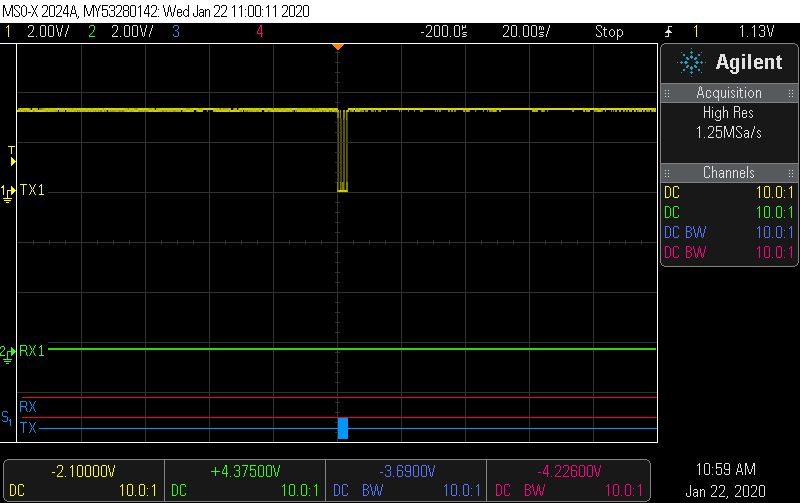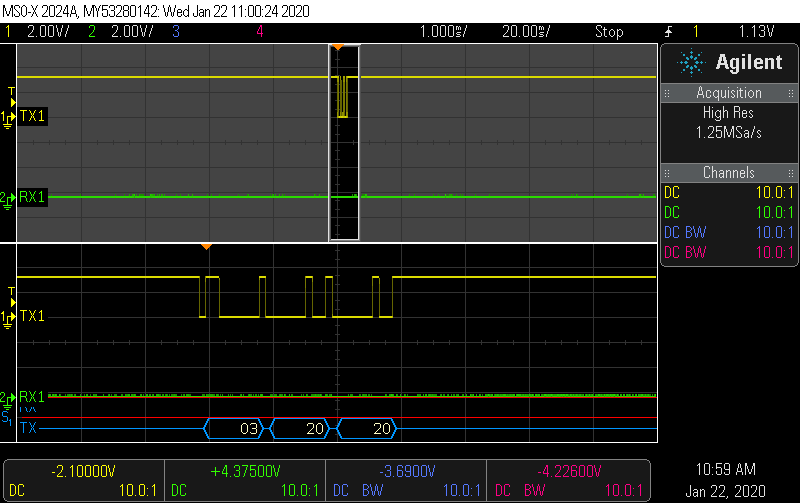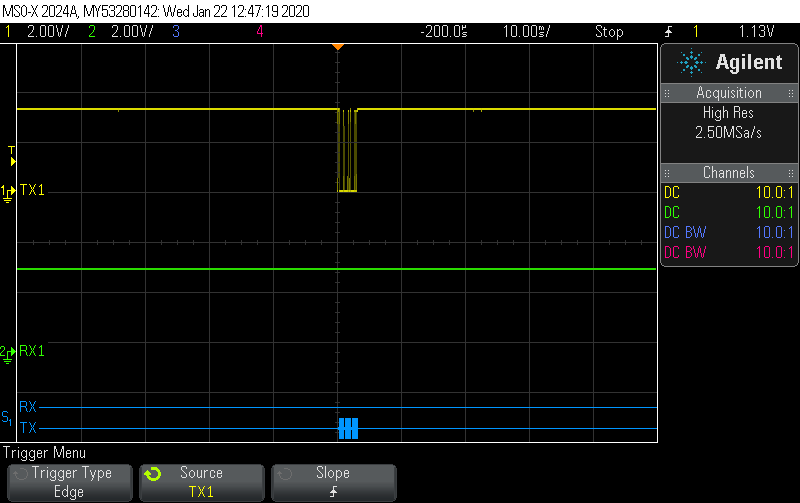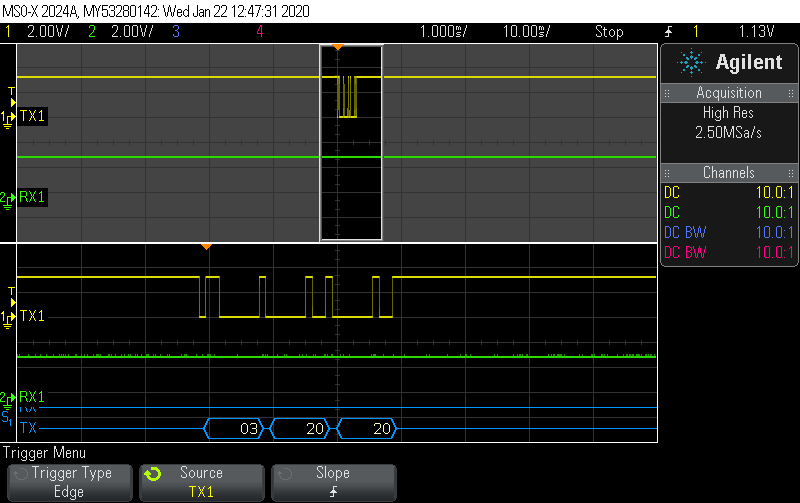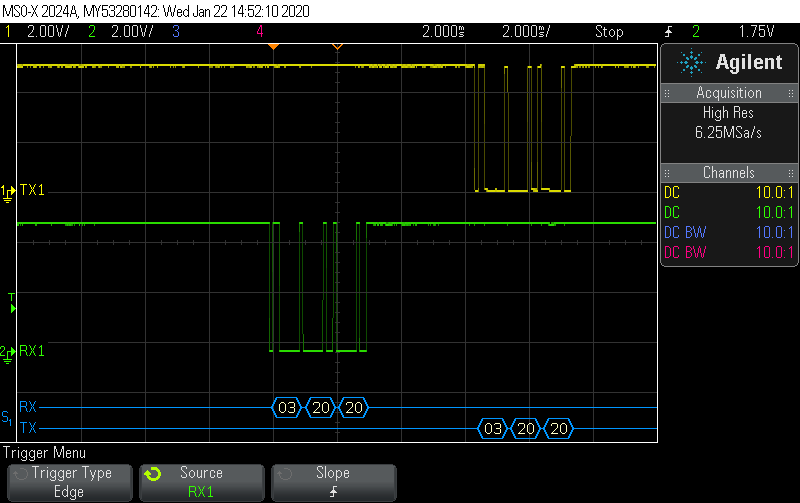Other Parts Discussed in Thread: UNIFLASH, EK-TM4C1294XL,
We have just received boards that have never had an application image burned to the micro. The ROM bootloader should be active, and searching for communications on UART0. We have tried communicating at different baud rates (460.8kbps, 115.2kbps, and 9600bps) all at N81. The first packet that we are sending is the COMMAND_PING packet ( 0x03 0x20 0x20 ) to UART0, but we never receive an acknowledgement. We have validated communications on an oscilloscope, and can send captures if needed.
Is there any setup steps that we are missing? Since this is the default state of the micro, I don't know what else there would be for setup instructions. We are trying to utilize the ROM UART bootloader to install the application from our board manufacturer, and then we will call the ROM bootloader to update our application from that point forward.


